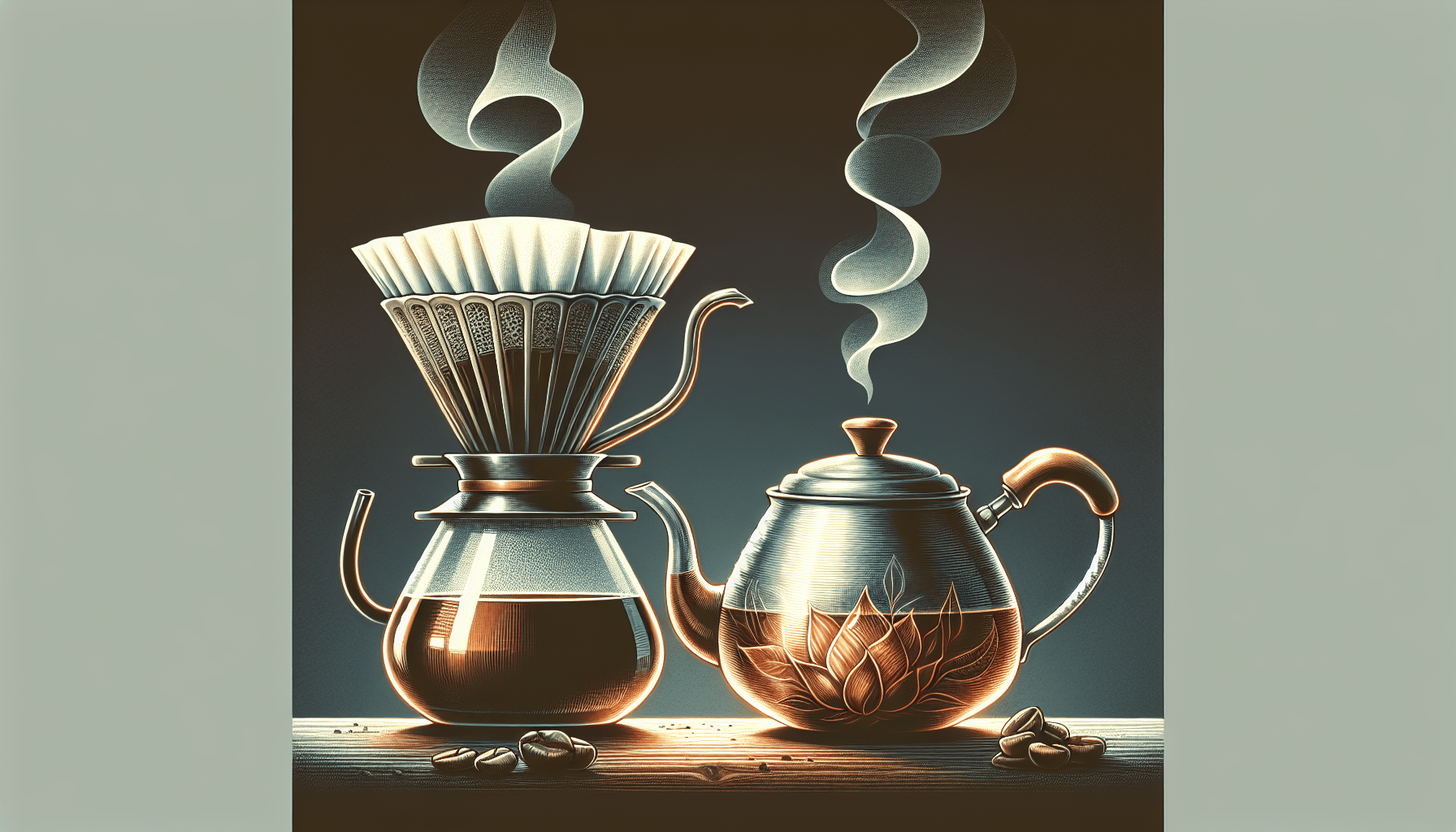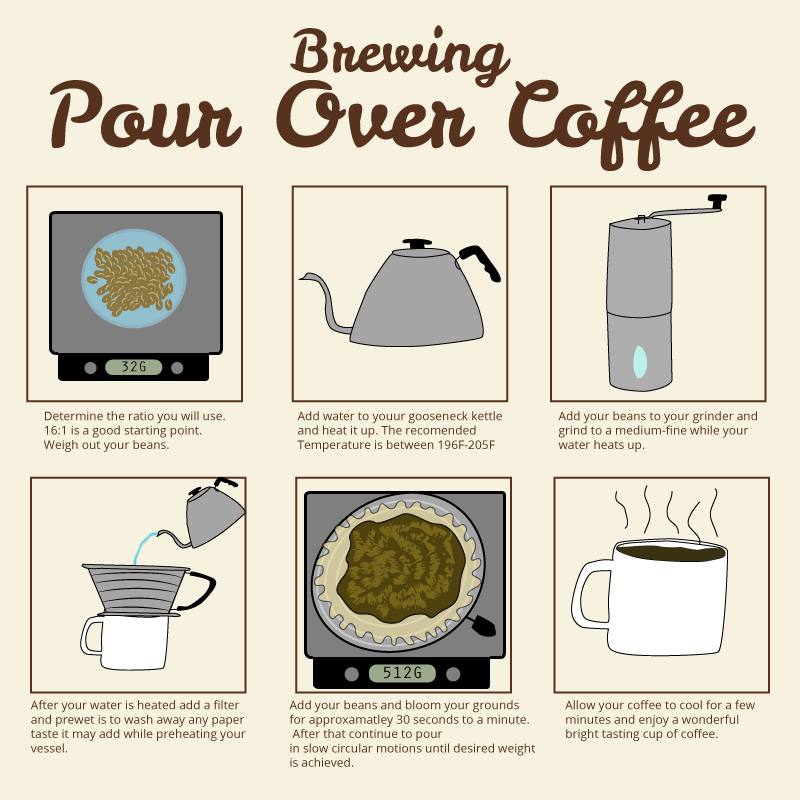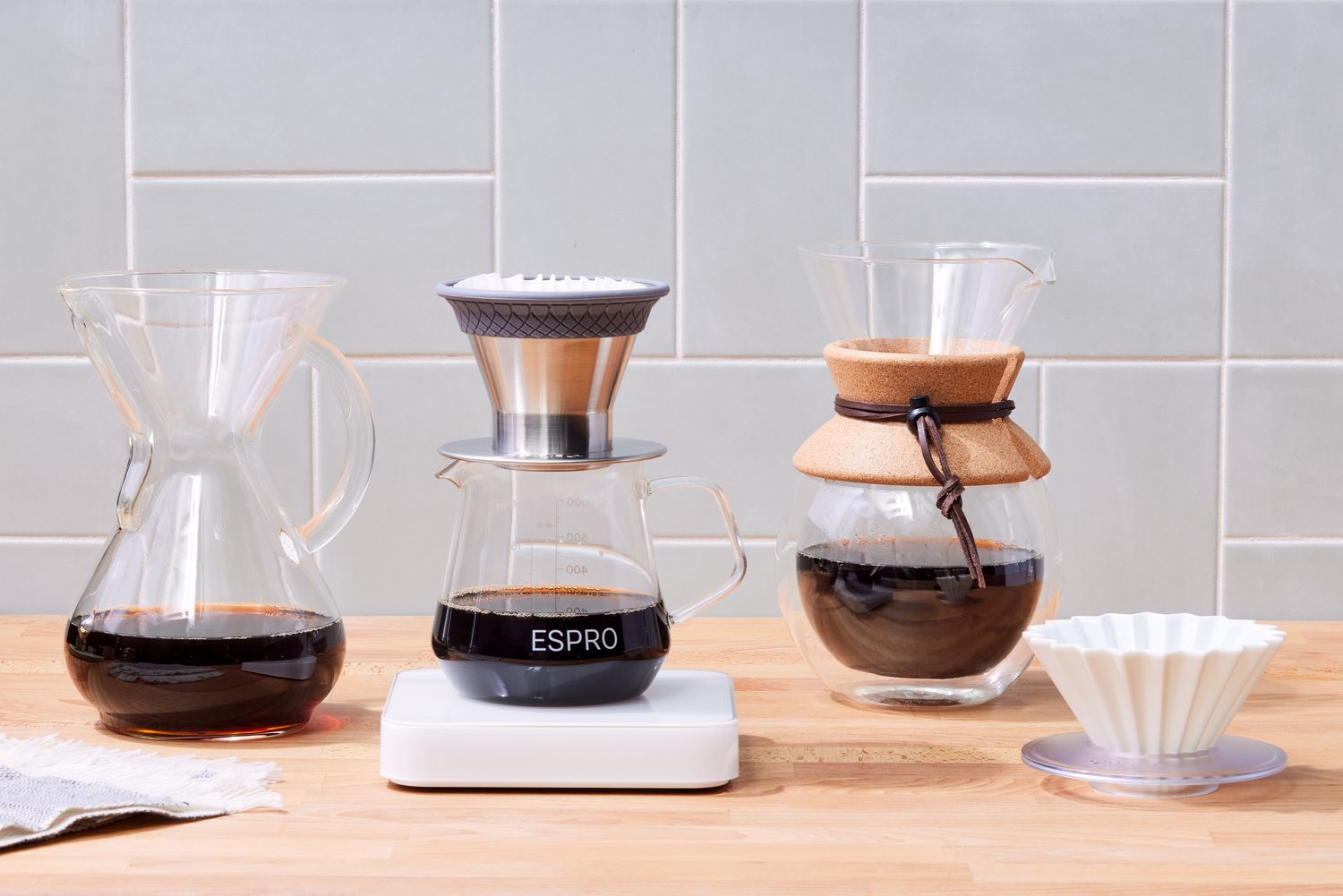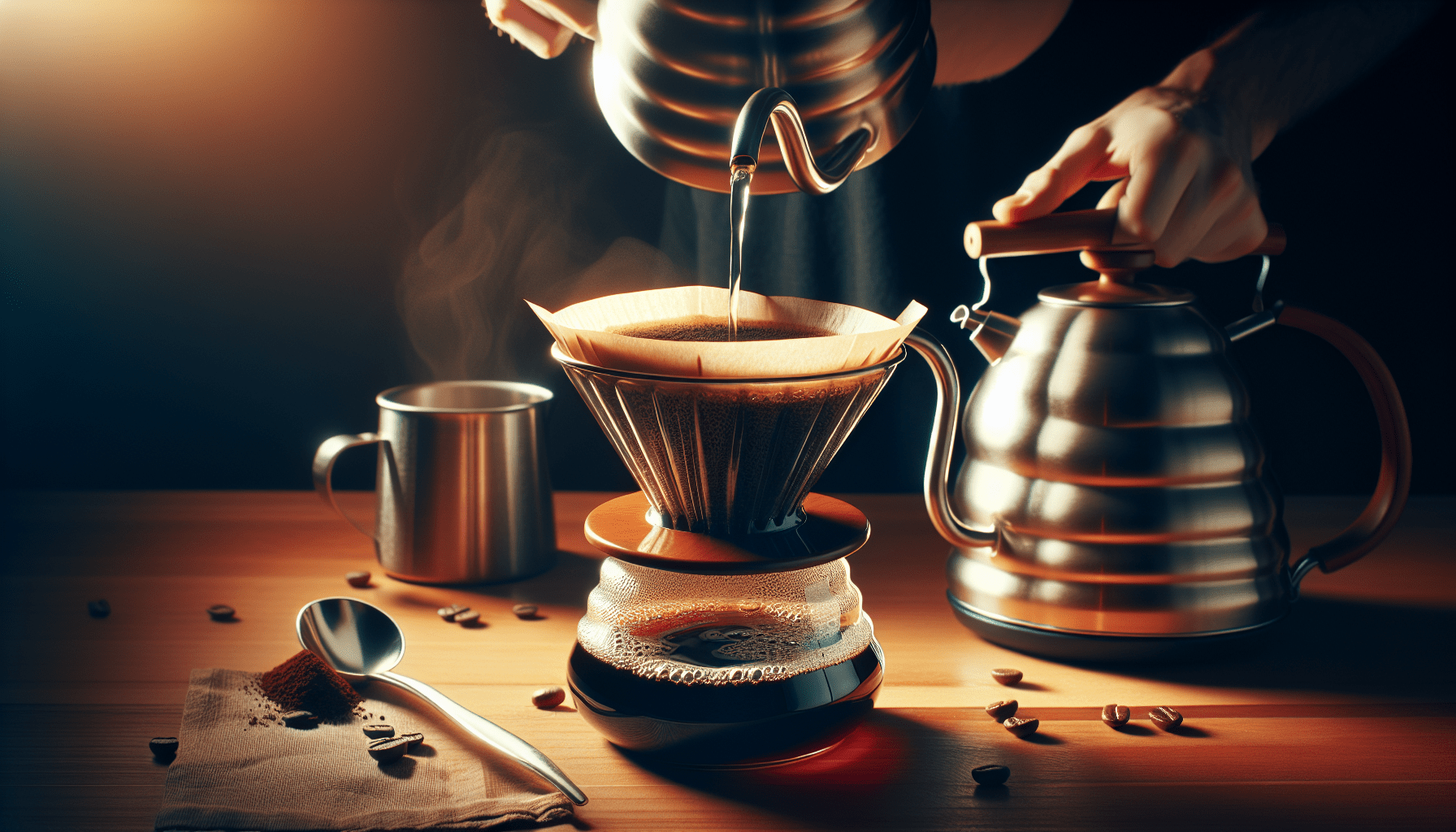If you’re a tea lover and also happen to have a pour-over coffee maker in your kitchen, you may be wondering – can I use it to make tea too? The answer might surprise you. In this article, we’ll explore whether or not a pour-over coffee maker can serve as a versatile tool for brewing a delicious cup of tea. So, grab a cuppa and let’s find out!
Introduction
Welcome to this article on using a pour-over coffee maker to make tea! While pour-over coffee makers are traditionally used to brew that perfect cup of coffee, they can also be versatile tools for making tea. In this comprehensive guide, we will explore how pour-over coffee makers work, their advantages and disadvantages for tea making, choosing the right one for your needs, preparing the coffee maker, brewing tea step-by-step, and some tips for better tea making. So grab your favorite tea leaves and let’s get started!
Understanding Pour-over Coffee Makers
What is a pour-over coffee maker?
A pour-over coffee maker is a brewing device that allows water to slowly pass through a filter, extracting the flavors from ground coffee beans. It typically consists of a carafe or container to hold the liquid, a cone-shaped dripper, and a paper or metal filter. The design of the dripper ensures a controlled and consistent flow of water over the coffee grounds, resulting in a clean and flavorful cup of coffee.
How does a pour-over coffee maker work?
When using a pour-over coffee maker, hot water is poured over ground coffee placed in the dripper. The water then filters down through the coffee, extracting the desired flavors and oils. The coffee drips into the carafe or container below, ready to be enjoyed. The pour-over method is known for its ability to bring out the unique characteristics of each type of coffee bean and allows for a hands-on brewing experience.
Making Tea with a Pour-over Coffee Maker
Can a pour-over coffee maker be used to make tea?
Absolutely! While pour-over coffee makers are primarily designed for coffee brewing, they can also be used to make tea. The basic principle of the pour-over method remains the same – hot water is poured over the tea leaves, allowing for extraction of flavors. However, there are a few considerations to keep in mind when using a coffee maker to brew tea.
Advantages of using a pour-over coffee maker for tea making
Using a pour-over coffee maker for tea making has several advantages. First, these coffee makers are widely available and often more affordable than dedicated tea brewing devices. Second, the controlled flow of water in a pour-over coffee maker allows for precise control over brewing parameters such as water temperature, steeping time, and water flow rate. Finally, the ability to customize the brewing process can result in a more flavorful cup of tea tailored to your preferences.
Disadvantages of using a pour-over coffee maker for tea making
While pour-over coffee makers can be used to make tea, there are a few disadvantages to consider. One potential drawback is the risk of cross-contamination if the coffee maker has previously been used for coffee brewing. This can lead to subtle flavor taints in your tea. Additionally, the size and shape of the coffee maker may not be ideal for brewing larger quantities of tea. Finally, some tea enthusiasts argue that tea should be brewed using specific devices designed to enhance the nuances of different tea varieties.
Choosing the Right Pour-over Coffee Maker for Tea
Factors to consider
When selecting a pour-over coffee maker for tea making, several factors should be considered. First, ensure that the coffee maker is made from a material that won’t impart any undesirable flavors to your tea. Glass or ceramic options are often preferred over plastic. Second, consider the size of the coffee maker and whether it can accommodate the desired amount of tea you intend to brew. Finally, look for coffee makers that offer adjustable water flow or have larger brewing capacities if you plan to experiment with different tea varieties.
Recommended pour-over coffee makers for tea making
While there are various pour-over coffee makers available on the market, a few options are particularly well-suited for brewing tea. The Hario V60, Chemex, and the Kalita Wave are popular choices due to their superior build quality, versatility, and ability to bring out the flavors of both coffee and tea. These coffee makers come in various sizes, making it easy to find one that fits your specific tea brewing needs.
Preparing the Pour-over Coffee Maker for Tea
Cleaning the coffee maker
Before using a pour-over coffee maker to brew tea, it’s essential to ensure that it is thoroughly cleaned. Any residual coffee oils or flavors can taint the taste of your tea. Clean the coffee maker by rinsing it with hot water and a mild detergent. Scrub the filter and dripper thoroughly to remove any leftover coffee grounds. Rinse the components well to remove any soap residue, and allow them to air dry before use.
Selecting the right type of filter
When brewing tea with a pour-over coffee maker, the type of filter you choose can impact the final taste and quality of your brew. Paper filters are commonly used for coffee brewing, but they can absorb some of the tea’s oils and flavors, resulting in a less robust cup of tea. Metal filters, on the other hand, allow more oils and flavor compounds to pass through, resulting in a stronger and fuller-bodied cup of tea. Experiment with different filters to find the one that suits your preferences.
Boiling water for tea making
The temperature of the water used to brew tea is crucial for extracting the desired flavors. Different types of tea require specific water temperatures, so it’s important to bring the water to the appropriate temperature before brewing. Generally, delicate green and white teas require lower water temperatures (around 175°F or 80°C), while black and herbal teas can be brewed with boiling water (212°F or 100°C). Use a thermometer or an electric kettle with temperature control to ensure you have the right water temperature for your chosen tea.
Brewing Tea with a Pour-over Coffee Maker
Step-by-step process
Brewing tea with a pour-over coffee maker follows a similar process to brewing coffee. Here’s a step-by-step guide to help you through the process:
- Start by placing the desired amount of tea leaves into the filter of the coffee maker. The amount of tea can vary depending on your taste preference and the specific tea variety.
- Boil water to the appropriate temperature for your tea type, as mentioned earlier.
- Wet the filter and dripper with a small amount of hot water to rinse away any paper or metal flavors that may affect the taste of your tea.
- Discard the rinse water from the carafe or container, and place the coffee maker on top.
- Slowly pour the hot water over the tea leaves, ensuring they are fully saturated.
- Allow the tea to steep for the recommended time as per the tea variety being brewed.
- Once the steeping time is complete, lift the coffee maker off the carafe, and let the remaining tea drip into the container.
- Serve and enjoy your freshly brewed cup of tea!
Adjusting brewing time and water temperature
The brewing time and water temperature can greatly impact the taste and strength of your tea. If you prefer a milder tea, reduce the steeping time or lower the water temperature. For a stronger brew, increase the steeping time or use hotter water. It’s essential to experiment and find the brewing parameters that suit your taste preferences and the specific tea variety you are brewing.
Different types of tea and their brewing requirements
Each type of tea has unique characteristics and requires specific brewing parameters to achieve the best flavor. Here are some general guidelines:
- Green and white teas: Brew at lower temperatures (175-185°F or 80-85°C) for 2-3 minutes.
- Black teas: Brew with boiling water (212°F or 100°C) for 3-5 minutes.
- Oolong teas: Brew at intermediate temperatures (190-200°F or 88-93°C) for 3-5 minutes.
- Herbal teas: Brew with boiling water (212°F or 100°C) for 5-7 minutes or longer, depending on the herbal blend.
Remember, these are just starting points, and you can adjust the brewing parameters based on your taste preference.
Tips for Better Tea Making with a Pour-over Coffee Maker
Choosing high-quality tea leaves
The quality of the tea leaves you choose plays a significant role in the final flavor of your brewed tea. Opt for loose-leaf tea instead of pre-packaged tea bags for a more authentic and flavorful experience. Look for teas sourced from reputable tea suppliers and experiment with different varieties to discover your favorites. High-quality tea leaves will result in a more enjoyable brew.
Experimenting with brewing techniques
One of the advantages of using a pour-over coffee maker for tea is the ability to experiment with different brewing techniques. You can try adjusting the water flow rate, steeping time, and water temperature to find the perfect balance that suits your taste. Keep a journal or tasting notes to remember the brewing parameters you enjoy the most for each type of tea.
Controlling water flow for better extraction
Controlling the water flow during brewing is essential for achieving optimum extraction of flavors from the tea leaves. Pour the water in a slow, steady stream over the tea leaves, allowing them to steep evenly. If you notice water pooling on the surface or draining too fast, adjust your pouring technique to achieve a balanced flow. Experiment with the water flow rate to find the sweet spot that brings out the best flavors in your tea.
Cleaning and Maintenance
Cleaning the coffee maker after tea making
After brewing tea with a pour-over coffee maker, it’s important to clean the equipment thoroughly to remove any lingering tea residue. Follow the same cleaning process mentioned earlier, rinsing all components with hot water and a mild detergent. Pay extra attention to the filter and dripper, as tea leaves can sometimes leave stains or oils behind. Regular cleaning will ensure that your coffee maker remains free from any unwanted flavors.
Removing tea stains from the coffee maker
Tea may leave behind stains or discolorations on the coffee maker, especially if it is made from porous materials like ceramic. To remove tea stains, fill the coffee maker with a solution of equal parts water and white vinegar. Let it sit for a few minutes, then rinse with hot water. For stubborn stains, gently scrub with a brush or sponge. Avoid using abrasive cleaners as they can scratch the surface of the coffee maker.
Conclusion
In conclusion, using a pour-over coffee maker to make tea can be a fun and innovative way to brew your favorite cup of tea. While coffee makers may not be specifically designed for tea, they offer certain advantages such as precise control over brewing parameters and affordability. By selecting the right coffee maker, preparing it properly, and experimenting with brewing techniques, you can enjoy a delicious and customized cup of tea. So go ahead, grab your favorite tea leaves, and start brewing a refreshing cup of tea with your trusty pour-over coffee maker!




